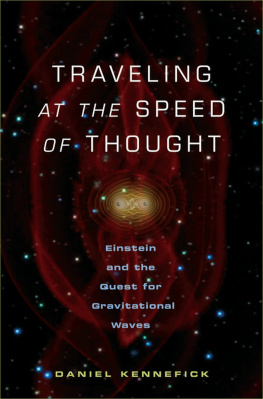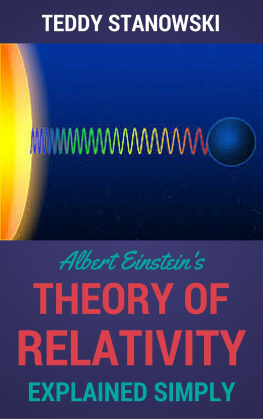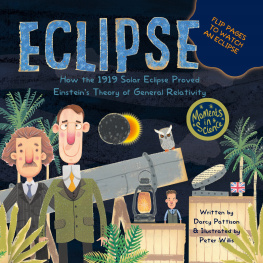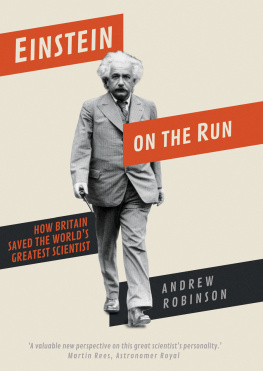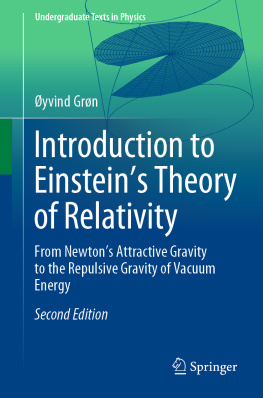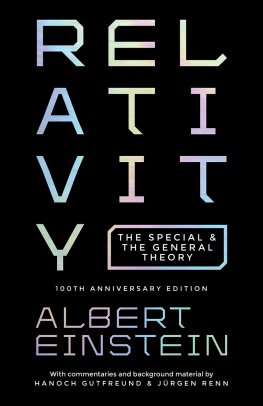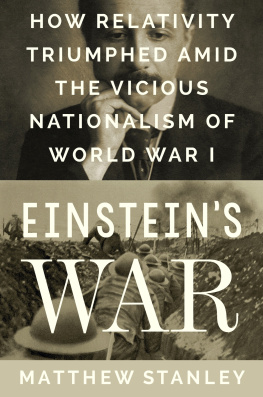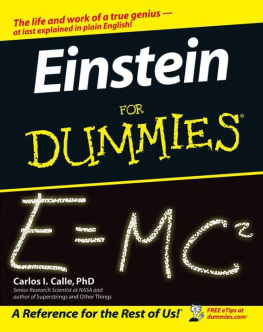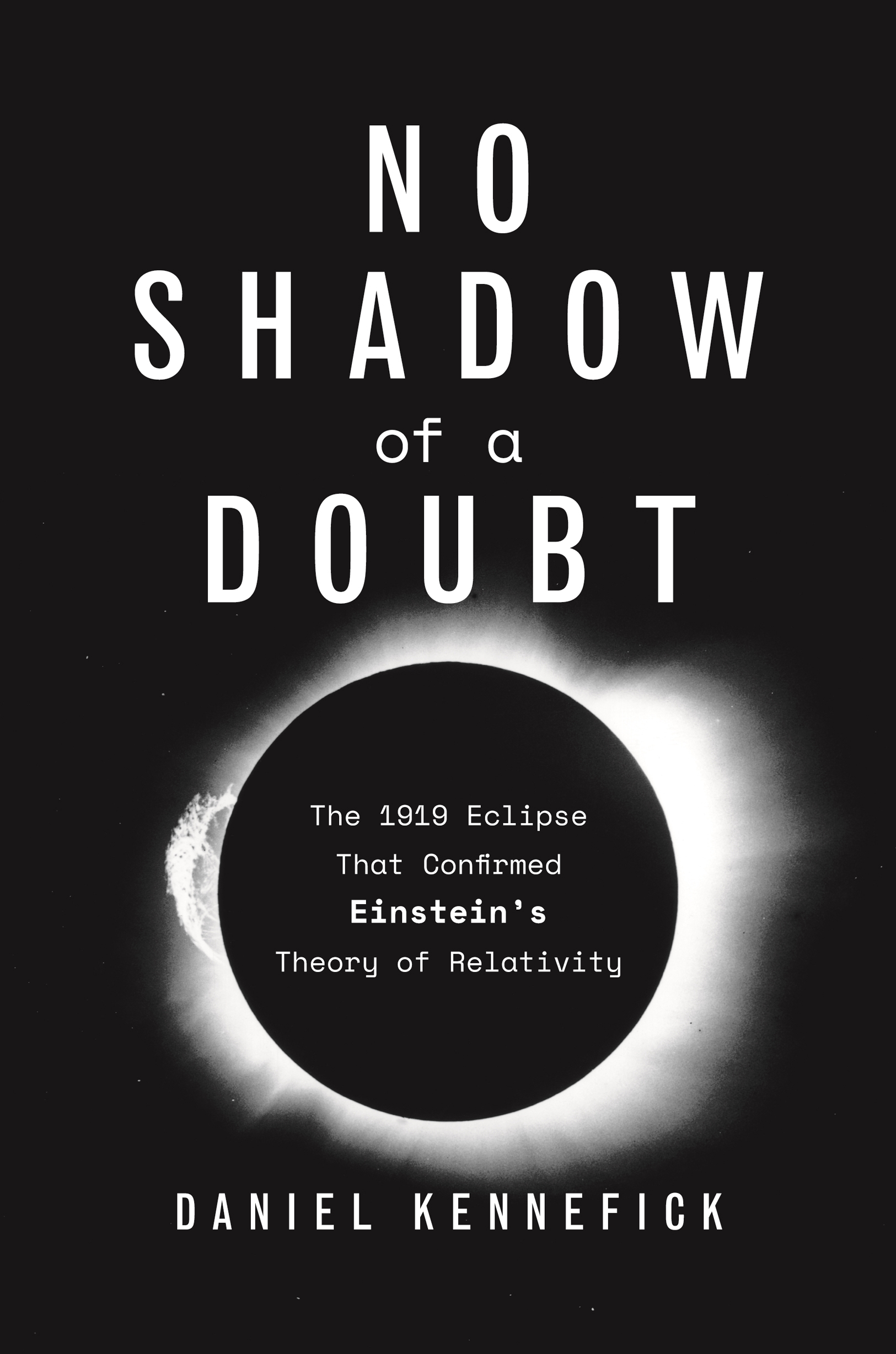Prologue
MAY 29, 1919
The night of May 29, 1919, was a busy one for Arthur Stanley Eddington. Busy nights are part of an astronomers routine, and in 1919 such nights were often followed by days in the developing room, preparing photographic plates of the night sky. That particular May, the process was reversed for Eddington. The plate developing took place at night. Eddington, on the tropical island of Principe, hoped for cooler temperatures after sunset. Principe lies just off the western coast of Equatorial Africa, far from Eddingtons usual haunts as the director of the Cambridge Observatory in England. His nights were free from observing duties because the plates had been exposed during the daytime. Eddington was not a solar astronomer used to taking images of the Sun. The images he had taken on the afternoon of May 29 were of a field of stars. Normally, such images cannot be taken during daylight hours because sunlight scattered across the sky overwhelms the relatively puny light of the stars. But at 2:13 p.m. (Greenwich time) that day, there had been an eclipse of the Sun, visible in totality on Principe. To observe stars near the Sun during totality, Eddington had traveled all the way from England.
A decade previously, Albert Einstein had predicted that the presence of the Sun close to the stars would alter their positions. To test this prediction, Eddington had made this arduous journey. Perhaps the day after the eclipse, and certainly as soon as he could, he began to study his first good plate, the only one he had developed with enough stars visible to make his measurements. He used an eyepiece with an attached micrometer screw to measure the positions on the plate of the five visible stars. These stars were well-known members of the Hyades star cluster, whose positions in the sky were also known. Eddington was trying to determine if these positions had changed slightly during the eclipse. He had brought with him plates, taken before his departure, showing the same stars by night in England. These comparison plates permitted him to measure the normal positions of these stars against those he had imaged during the few minutes of the day when the totality made them visible. He knew that other scientists were waiting to hear how Einsteins theory had fared. He quickly sent a telegram back to his collaborator, Englands Astronomer Royal, Sir Frank Watson Dyson. It read, Through cloud, hopeful. Dyson and Eddington had together planned the expedition amid great difficulty during the final months of World War I. Eddington had entertained hopes of sending his results home within days, but instead the difficult process of measurement took months. He was handicapped by the small number of stars on his plates, the result of clouds obscuring the area around the Sun during the eclipse. Only the brightest stars had been visible on Principe and only at the very end of totality. Fortunately, a team from Dysons own observatory at Greenwich, near London, had gone to Brazil to observe the eclipse and had better luck with the weather. But they encountered technical difficulties that complicated their data analysis, conducted at Greenwich under Dysons direction after the expeditions return from Brazil.
Einsteins theory of general relativity predicts that light is affected by gravity and that starlight passing close to the Sun falls toward it, no longer following a straight path through space. This deviation causes an apparent shift in the position of the stars, as seen from Earth. It was this shift that the expedition sought to measure, in spite of its tiny size. As Eddington put it, the purpose of the expedition was to weigh light. He and Dyson hoped to discover if light has mass and is therefore affected by the force of gravity. Most physicists of the day thought that light, as a wave phenomenon, was massless and not subject to gravitys pull. Today, we have no doubts that Einstein was right. Yet, looking back, todays scientists and historians are often very critical of Eddington and Dysons work. Astronomers and physicists of the last few decades who have tried to improve on the measurements made by the English team of 1919 have found the experiment very difficult, even with more modern equipment. Members of an expedition from the University of Texas, who also went to Africa during an eclipse in 1973, expressed doubts that Eddington and Dyson could have achieved the accuracy they claimed with the instruments available in 1919. Then historians and philosophers of science weighed in, claiming that Eddington was biased in favor of Einsteins theory and questioning certain decisions taken during the difficult data analysis process. Thus, measurements conducted a century ago are still causing controversy today.
Faced with such controversy, it is important to look closely to see what really happened. This means looking at all the people involved, beginning with Dyson and Eddington, who are introduced in ).
Remarkably, even Dyson, the main organizer of the expeditions, has been unfairly overlooked in some recent histories. By focusing on the expertise of Dyson and his assistants, we will learn something of the key techniques and methods used in 1919 and appreciate more fully the experimental art that went into the science of the day. How this experimental art evolves over time is discussed in the books final . The story that results from such careful study is not only more detailed but richer, more exciting, and more interesting than the story of the great scientists told as if they acted alone. The historian of science Steven Shapin famously showed how the chemist Robert Boyles research depended on many technicians and assistants who, though unnamed and almost invisible, made important contributions to his work (Shapin 1989). Most of the people involved in 1919 were applauded in their day, but the passage of time has caused us to lose sight of their crucial roles. This book aims to correct this oversight, which could cripple serious attempts to understand how the science of the eclipse was accomplished. Only with this complete history can we reach firm conclusions about the reliability of this famous experiment.
And a famous experiment it was. May 29, 1919, was indeed the date of probably the most important eclipse in history. Eclipses have been credited with ending wars and with preserving the rule of colonizing explorers like Christopher Columbus. Yet for all the wonder and admiration they excite, the observation of this one eclipse by a few astronomers from Britain and Ireland has outdone them all. Their work may well have been the most important scientific experiment of the entire twentieth century. What they achieved is responsible for the worldwide fame of Albert Einstein. They established his theory of general relativity as the most celebrated theory in physics. They deposed Newtons theory of gravity from its perch as the greatest achievement of the human intellect. And they excited the whole world as no scientific event had before. Yet they were almost foiled by cloud at one site and by the intensity of the Suns heat at the other. By good fortune they still managed to pull it off. Yet many have charged over the years that something was suspect about their work and the results they claimed to have achieved. In this book we will meet those men, follow their journey, learn what they did, and argue that they did it well, or as well as possible in very difficult circumstances.


